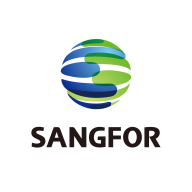


Forcepoint Next Generation Firewall and Sangfor NGAF compete in the cybersecurity market. Sangfor seems to have the upper hand in affordability and feature integration, while Forcepoint excels in comprehensive threat protection and centralized management.
Features: Forcepoint offers advanced intrusion prevention, VPN capabilities, and centralized management, ensuring robust security measures for enterprises. In contrast, Sangfor NGAF provides an intuitive management system, integrated security features, and ease-of-use, which make security management accessible for various business sizes.
Room for Improvement: Forcepoint could improve its cost-effectiveness and streamline its user interface for better usability. Its setup can be complex, potentially confusing for administrators. Sangfor NGAF can enhance its performance capabilities, particularly in threat detection. Additionally, increased integration options with third-party solutions and more advanced reporting features could further benefit users.
Ease of Deployment and Customer Service: Forcepoint provides a flexible deployment model with detailed setup guidance and responsive customer support. Its centralized management simplifies operations for enterprises. Sangfor NGAF stands out for its straightforward, user-friendly setup process and commendable customer service, providing practical assistance whenever needed.
Pricing and ROI: Forcepoint is positioned as a premium solution with a higher setup cost, offering notable ROI through its extensive features. Sangfor NGAF offers a cost-effective pricing structure with solid ROI, making it an attractive option for organizations looking for efficient yet affordable security solutions.
| Product | Market Share (%) |
|---|---|
| Fortinet FortiGate | 20.4% |
| Sangfor NGAF | 1.2% |
| Forcepoint Next Generation Firewall | 0.5% |
| Other | 77.9% |



| Company Size | Count |
|---|---|
| Small Business | 350 |
| Midsize Enterprise | 130 |
| Large Enterprise | 187 |
| Company Size | Count |
|---|---|
| Small Business | 27 |
| Midsize Enterprise | 8 |
| Large Enterprise | 10 |
| Company Size | Count |
|---|---|
| Small Business | 15 |
| Midsize Enterprise | 10 |
| Large Enterprise | 10 |
Fortinet FortiGate excels in providing integrated VPN, firewalling, and Unified Threat Management (UTM) with centralized management and high availability. It supports remote access and comprehensive threat protection, making it a preferred choice for securing networks.
Fortinet FortiGate offers a robust security platform with features such as strong intrusion prevention, application control, and web filtering. Its integration with Active Directory and SD-WAN functionality provides scalable solutions for large networks. Users appreciate its ease of use through centralized management interfaces, ensuring robust security with flexible configurations. However, FortiGate could enhance its graphical interface and technical support responsiveness, address firmware bugs and costly licensing, improve logging, integrate better with third-party tools, and strengthen scalability and memory for log storage. Complexity in configuration and the need for intuitive features are noted challenges, and there's a demand for advanced security, zero-trust capabilities, and AI integration.
What are the key features of Fortinet FortiGate?Fortinet FortiGate is widely implemented across industries like education, finance, and government. Companies use it for firewall protection, VPN, and SD-WAN capabilities, ensuring secure perimeter and data center security. It facilitates remote access management and traffic routing optimization, offering reliable security and connectivity solutions.
Forcepoint Next Generation Firewall is a versatile and comprehensive solution for perimeter security, offering features such as SD-WAN, IPS, VPN, and cloud or on-premises subscription keys. It is preferred by many clients over Cisco and is used for obligation redundancy, VPN access, and as the main point of security in infrastructure.
The product is praised for its simplicity, flexibility, complete feature set, scalability, and central management capabilities. Other valuable features include IPS, firewall, sandbox, application control, filtering, security management center, connectivity, and integration capabilities.
Sangfor Next Generation Firewall (also known as NGAF) is a converged security solution providing protection against advanced threat, malware, viruses, ransomware and web-based attacks using integrated security features like firewall, IPS, anti-virus, anti-malware, APT, URL filtering, Cloud Sandbox, and WAF. As the world's first AI-enabled and fully integrated Next Generation Firewall & Web Application Firewall (WAF), NGAF offering the security visibility, real-time detection and response, simplified operation and maintenance and high-performance application layer security needed to operate an enterprise network in total security. Tested and proven to provide cutting-edge network security by ICSA Labs and endorsed by Gartner Inc., NGAF harnesses the power of Sangfor’s Neural-X threat intelligence and analytics platform and Engine Zero’s innovative malware detection to provide next-generation protection for today’s enterprise.
We monitor all Firewalls reviews to prevent fraudulent reviews and keep review quality high. We do not post reviews by company employees or direct competitors. We validate each review for authenticity via cross-reference with LinkedIn, and personal follow-up with the reviewer when necessary.